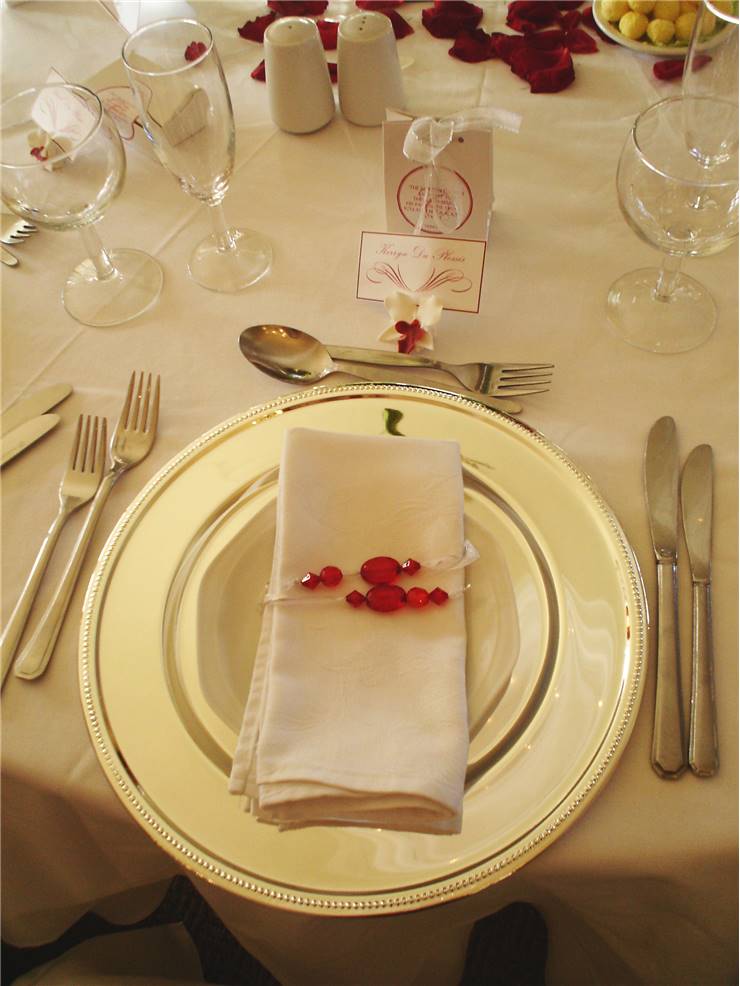Eating Utensils Etiquette - The Dining Etiquettes
Etiquette at the table is not a product of modern times. Ever since eating utensils were made, they were used in daily eating rituals that constantly changed and were adapted in countless civilizations around the world. The written code of etiquette was first introduced in the behavior code called " The Instruction of Ptahhotep" which was created during the reign of Ancient Egypt's Pharaoh DjedkareIsesi in 2414-2375 BC. After that many cultures started developing their own rules of conduct during meal, position of utensils at the table and appropriate ways of using them. Empire of Ancient Rome and enforced their rules (sitting on the pillows around small table, beverages laid near the pillows, and food was consumed either by fingers or two kind of spoons) which were adapted over the centuries with various addition from their neighbors from Greece, Egypt and other regions.
European Middle Ages had very distinctive differences between table manners of three classes of people - commoners had little or no rules of eating, clergy held some structure to their communal meals, and nobility enjoyed extravagant diets and access to finer foods. As the middle class merchants and traders started acquiring higher tastes, nobility even tried to constrain them by issuing laws that put a cap on lavishness of their banquets.

During the Age of Renaissance, Baroque, and Enlightenment, table etiquette reached new heights with the introduction of spoon, fork and table knife to majority of homes in Europe and America. Changes in eating diets and customs, rise of the middle class, and overall introduction of advancing technologies into life of every man soon created the look of eating etiquette that is in many ways preserved in our modern societies. One of the first books that defined the acceptable social norms was created in early 1520s, but the pillar of modern etiquette was defined in the 16th century book "The Courtier" by Baldassare Castiglione, which became the golden standard of behavior of men and women of high and middle classes all up to World War I.
Modern day etiquette received many changes over the last half a century, and many countries around the world have their own specific tradition regarding behavior of people in public events, and especially for eating. Here are only few of the most notable dining etiquettes that are enforced today around the world:
United States
Because arrival of eating utensils such as fork and spoon came very late to this young nation, the most used type of dining etiquette demands usage of all utensils in right hand. You hold steady the meat in left hand with fork and cut with knife with right, but when it comes to eating, fork must be transferred to right hand. This rule does not allow left-handed people to eat with the left hand.
United Kingdom
UK style is today known as more efficient and lenient to the left-handed persons, who can eat food even with their left hand if they prefer so. Another difference from American style is ability to use knife or peace of bread to force the food to be captured on the fork.
India
Traditional Indian meal is consumed only with fingers, and only from those from the right hand (left is superstitiously conserved for cleaning yourself). In more northern regions and tourist restaurants throughout the country, use of forks and spoons is more common.
Thailand
Thailand adopted very unique eating etiquette. Noodle soups are eaten with chopsticks, but all other meals are consumed with fork and spoon. Fork is used for cutting and shoving food onto spoon, from where you transfer food to mouth.
Chopstick etiquette
There are many obligation and forbidden techniques while eating which chopsticks in Asian lands. Generally, it is forbidden to use chopsticks in gestures while talking, sticking them into food, offering other to eat from your chopsticks, licking and biting food from chopsticks and more.
